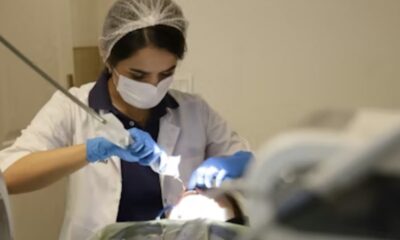Health
Americans Spend Trillions on Health Care Yet Struggle with Wellness

Health care spending in the United States has reached staggering heights, exceeding trillions of dollars, yet many Americans continue to face significant health challenges. The case of Mei Lin, whose mother suffered a stroke, exemplifies this paradox. After a swift response from medical professionals, her mother’s immediate health crisis was managed effectively. However, the real test for Mei Lin began once her mother returned home, highlighting a crucial distinction between medical care and ongoing health care.
The medical intervention in hospitals is often swift and technologically advanced. Doctors rapidly perform scans, prescribe medications, and stabilize patients, providing life-saving treatment. In Mei Lin’s case, her mother received high-quality medical attention that ensured her survival. Yet, despite such advanced medical systems, the transition to maintaining health at home presents its own set of challenges.
Understanding the Gap Between Medical Care and Health Care
The difference between medical care and health care is significant. Medical care focuses on treating acute conditions, while health care emphasizes preventive measures and the management of chronic conditions. This distinction is critical in understanding why high spending does not always translate to better health outcomes.
In the United States, the health care system predominantly prioritizes treatment over prevention. According to the Centers for Medicare & Medicaid Services, approximately $4.3 trillion was spent on health care in 2021 alone. Despite this investment, health statistics reveal troubling trends. A report from the American Journal of Public Health indicated that chronic diseases such as diabetes and heart disease continue to rise, affecting millions of Americans.
The challenge lies in shifting focus from reactionary care to proactive health management. For families like Mei Lin’s, this means ensuring that proper lifestyle changes, regular check-ups, and adequate support systems are in place. Unfortunately, many individuals lack the resources or knowledge to navigate this complex landscape, often resulting in repeated hospital visits.
The Role of Preventive Care and Community Support
Preventive care plays a crucial role in reducing the burden on hospitals. Programs that facilitate access to routine screenings, nutrition education, and mental health resources can drastically improve community health outcomes. For instance, initiatives led by organizations such as the American Heart Association focus on educating the public about heart health, aiming to reduce the incidence of heart disease through lifestyle modifications.
Moreover, community support systems are vital. Mei Lin faced the daunting task of ensuring her mother adhered to a healthier routine, which included proper diet and regular exercise. Without adequate support, many families struggle to maintain these necessary lifestyle changes, leading to a cycle of health crises.
The gap between medical care and health care is not merely a personal challenge; it reflects systemic issues within the health care infrastructure. As the United States grapples with this discrepancy, the focus on comprehensive health strategies becomes ever more pressing.
In conclusion, while the nation invests heavily in medical care, the need for robust health care systems that prioritize prevention and community support remains critical. Bridging this gap could lead to improved health outcomes and a healthier population overall. The ongoing journey for families like Mei Lin’s highlights the urgent need for a comprehensive approach to health that transcends the walls of hospitals.
-

 Technology5 months ago
Technology5 months agoDiscover the Top 10 Calorie Counting Apps of 2025
-

 Health2 months ago
Health2 months agoBella Hadid Shares Health Update After Treatment for Lyme Disease
-

 Health3 months ago
Health3 months agoErin Bates Shares Recovery Update Following Sepsis Complications
-

 Technology4 months ago
Technology4 months agoDiscover How to Reverse Image Search Using ChatGPT Effortlessly
-

 Technology1 month ago
Technology1 month agoDiscover 2025’s Top GPUs for Exceptional 4K Gaming Performance
-

 Technology2 months ago
Technology2 months agoElectric Moto Influencer Surronster Arrested in Tijuana
-

 Technology5 months ago
Technology5 months agoMeta Initiates $60B AI Data Center Expansion, Starting in Ohio
-

 Technology5 months ago
Technology5 months agoRecovering a Suspended TikTok Account: A Step-by-Step Guide
-

 Health4 months ago
Health4 months agoTested: Rab Firewall Mountain Jacket Survives Harsh Conditions
-

 Lifestyle5 months ago
Lifestyle5 months agoBelton Family Reunites After Daughter Survives Hill Country Floods
-

 Technology4 months ago
Technology4 months agoHarmonic Launches AI Chatbot App to Transform Mathematical Reasoning
-

 Technology3 months ago
Technology3 months agoUncovering the Top Five Most Challenging Motorcycles to Ride




















